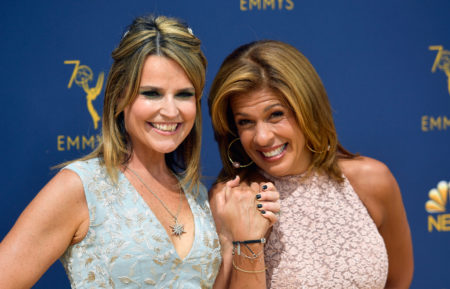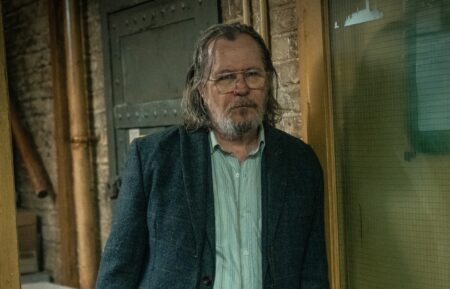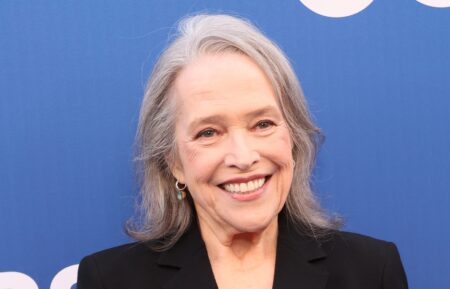Why Did It Take 30 Seasons for ‘DWTS’ to Feature a Same-Sex Pairing?

Opinion
Hit reality competition Dancing With the Stars will break new ground when it returns for its 30th season. New ground for Dancing With the Stars, that is. After 29 seasons and 336 contestants, the show is finally featuring a same-sex pairing—as similar shows have done for years—now that Dance Moms alum JoJo Siwa is set to dance with a female partner this fall.
Yes, that makes one same-sex duo after 336 heterosexual pairings. That’s representation of just under 0.3 percent—not even a third of one percent.
Compare that to recent Gallup data that shows that more than 5 percent of U.S. adults—and more than 15 percent of Gen Z adults in the United States—identify as bisexual, gay, or lesbian.
So, no, I’m not waving my “10” paddle at Dancing With the Stars’ overdue queer inclusion.
Perhaps I’d celebrate the ABC show if it featured a same-sex pairing 10 years ago, or even five years ago. After all, other dancing competitions on television—and even Dancing With the Stars’ overseas counterparts—have had men coupled with men and women coupled with women for years now.
“It’s past time for same-sex couples to compete on Dancing With the Stars in the U.S. as they have in versions of the show airing in countries like Australia, Denmark, Ireland, Israel, and Italy,” Sarah Kate Ellis, president and CEO of GLAAD, told Newsweek in 2020.
Sure enough, the American version of Dancing With the Stars has been airing since 2005, and aside for a brief moment during Season 22—when Nyle DiMarco and Jodie Sweetin switched partners for 20 seconds during an Argentine tango—it has shied away from dance routines that might be read as queer.
In fact, a Dancing With the Stars producer reportedly put the kibosh on a dance routine with “two males dancing with each other” in 2015. In an email, a DWTS producer cited a “definitive no from the network,” according to TMZ.
In past interviews, DWTS producers have used ballroom norms as their excuse—a convenient “out,” if you will—for not featuring same-sex pairings.
“We’ve discussed [such] pairings in the past,” one producer, Conrad Green, told NBC News in 2011. “But the traditional role in ballroom [dancing] is for men to have a female partner, so that’s what we’ll do.”
And indeed, the show has a long history of putting queer celebrities with professional dancers in hetero pairings. DWTS producers paired Lance Bass with Lacey Schwimmer in Season 7, Margaret Cho with Louis van Amstel in Season 11, Carson Kressley with Anna Trebunskaya in Season 13, Diana Nyad with Henry Byalikov in Season 18, Jonathan Bennett with Allison Holker in Season 19, Michael Sam with Peta Murgatroyd in Season 20, and Adam Rippon with Jenna Johnson in Season 26.
In the same 2011 NBC News article, DWTS producer Deena Katz said that she was “surprised” by the calls for same-sex partnering. “This is not a social dancing show, it’s a dancing competition,” she added. “A man should dance with a woman, no matter what your sexual orientation, in ballroom. … We’re not setting people up on dates.”
That response seems glib—condescending, even. Queer viewers and their allies know the difference between Dancing With the Stars and The Bachelor. They weren’t asking for DWTS to be “setting people up on dates”; they were asking the show to reflect modern-day society instead of clinging to heteronormative ballroom standards. (Coincidentally or not, Green and Katz are no longer DWTS producers, according to their IMDb profiles.)
From a more cynical standpoint, perhaps producers kept the dance routines straight to appease the show’s conservative fanbase. DWTS has proven red-state appeal, and conservatives have historically been less accepting of homosexuality.
And despite Katz’s problematic claim that a man “should” dance with a woman in ballroom, same-sex ballroom competitions have proved popular at the Gay Games and Outgames, as Cornell University performing arts and media arts professor J. Ellen Gainor noted in a 2006 article in The Gay & Lesbian Review.
Gainor also described ballroom dancing as “one of pop culture’s favorite symbols of heterosexual desire and romance (as well, less frequently, as a signifier of homosexual panic)” but observed that “there is nothing biologically essentialist about the dance itself.”
She went on: “Many of the steps that comprise the individual dances are executed similarly by both partners, and there is nothing inherent to the figures—other than convention—that precludes their being danced by either sex.”
So yes, I’m happy that Siwa gets to express her sexuality on the dance floor—and even happier that she’ll boost pansexual visibility in the process—but I’m underwhelmed by Dancing With the Stars’ too-little, too-late inclusion effort. And frankly, I’m not convinced that ballroom traditions were the reason DWTS didn’t feature a same-sex pairing until its 30th season.
But I have hope for change—both on the dance floor and in America at large. If Dancing With the Stars can make LGBTQ+ visibility a rule instead of an exception, and if it can let its stars dance with whichever pro they want to dance with, then perhaps the show’s viewers will understand and embrace the vast spectrum of sexual and gender identities. And perhaps we can all cha-cha-cha into a happier, safer future for LGBTQ+ individuals.








